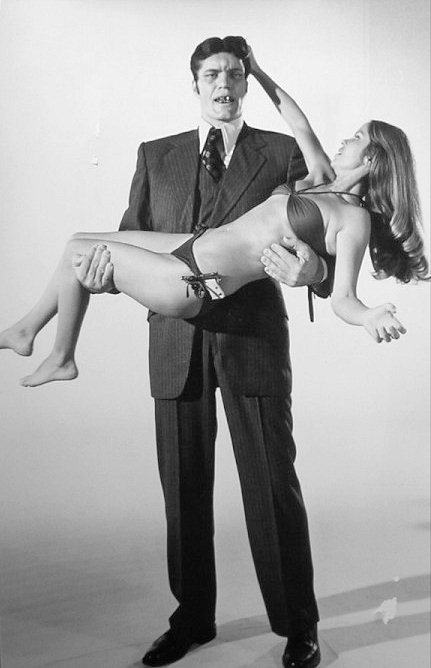We now move into the era of Pierce Brosnan, the Bond we grew up watching. As Chicken Man intimates in his review, we came to appreciate Brosnan-Bond in GoldenEye through an inverse method: it was the N64 shooter of the same name that turned us on to the film (and, eventually, all the others in the series). That's probably not an uncommon phenomenon for our generation. Nevertheless, whatever the course of our affective relationships with the multiple texts of GoldenEye, the film is unquestionably one of the finest in the series. Indeed, if the Code Redd Net Awards and its Best Bond Movie prize were the last word on the subject, we'd have to say GoldenEye is tops.
For myself (and I imagine for a few others) GoldenEye is the movie adaption of a very popular N64 game. Though not saying much, it is probably the best movie adaption of a game ever made. Kidding aside, I find GoldenEye to be everything a Bond film should be. If we think of James Bond as the man men want to be and women want to be with, Pierce Brosnan plays this part succinctly. I find him to be the most "charming and sophisticated secret agent" of the Bonds, as Valentin Zukovsky suggests. Unlike Moore, he is not upper-crusty, but fits well on the cover of Cigar Aficionado.
 |
| "Mirror, mirror, on the wall, Jean-Claude Van Damme I'm fine!" |
His enemy well chosen: an MI6 agent, Alec Trevelyan, 006 (Skyfall seems to be trying to replicate this villain device). Trevelyan is also a personal friend; one who grew tired of serving a government that betrayed his family. He wants revenge and thought of asking Bond to join him, but accuses him of having greater loyalty to the mission than to his friends. As I've mentioned before, it interests me when Bond's servitude to the state is put into question. It would have been better had Trevelyan's plan not intended to harm so many innocents, making Bond's decision not so clear cut. Regardless, it is so much more enjoyable when the Bond villain is a respectable adversary. It is somewhat refreshing that he doesn't have some ridiculous scheme involving the destruction of Earth, but an EMP space weapon that seems plausible and reasonable in furthering his objectives. Bond is really being unfair in calling him "nothing more than a common thief."
The surrounding cast is good as well. Female villains are always interesting, especially when they have not-so-subtle names. Xenia Onatopp is one of the most vivacious of Bond chicks, along with May Day, and is as easily remembered. Boris Grishenko is a likable, though arrogant computer programmer who, like Baron Samedi, is "invincible." Quite a team, they are.
A (mostly) required element to a good Bond movie are the gadgets, and Q keeps it pretty simple with a belt containing a rappel cord (I enjoy how Bond asks about a possible contingency, considering my criticism in the past of Q's perfect foresight), a grenade pen, and a watch that can detonate mines and shoot lasers.
The final requisite is the action scenes, and I find GoldenEye to be unsurpassed in this regard. It certainly is more violent (according to my count, Bond shot more people in his escape from the Russian military archives than Connery did in whole movies), enough to make a game out of it, but this isn't what makes it good. It is the frequency and the way in which it is done. During the tank chase scene, the Bond theme music is well incorporated (something noticeably missing in previous films), especially with its dramatic flair in the crescendo with the timpani drums. Fantastic work.
It's all here. Bond seems like Bond. The villains are cool and scary. The plot is high stakes yet believable. The gadgets are practical. The action is constant. GoldenEye is what a 007 movie should be.













